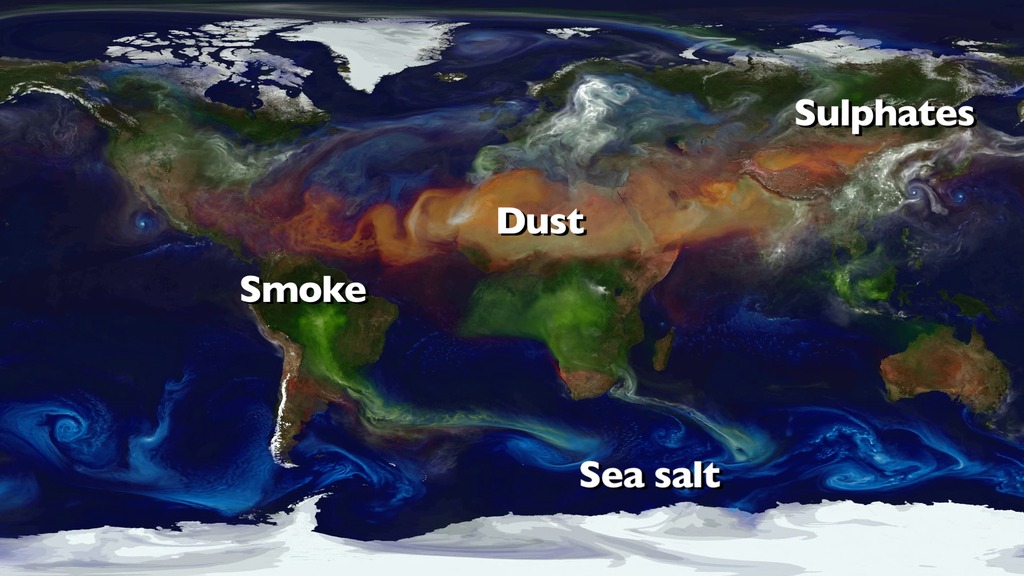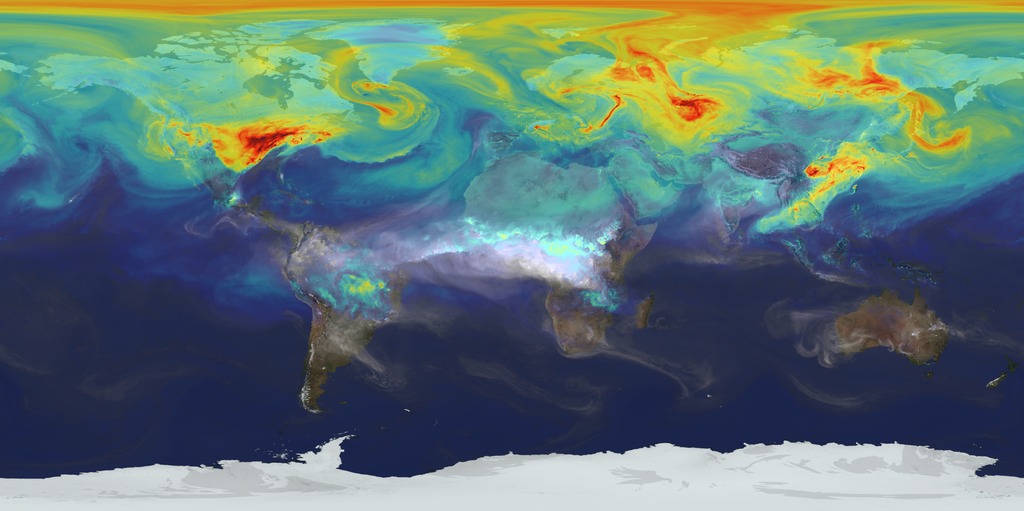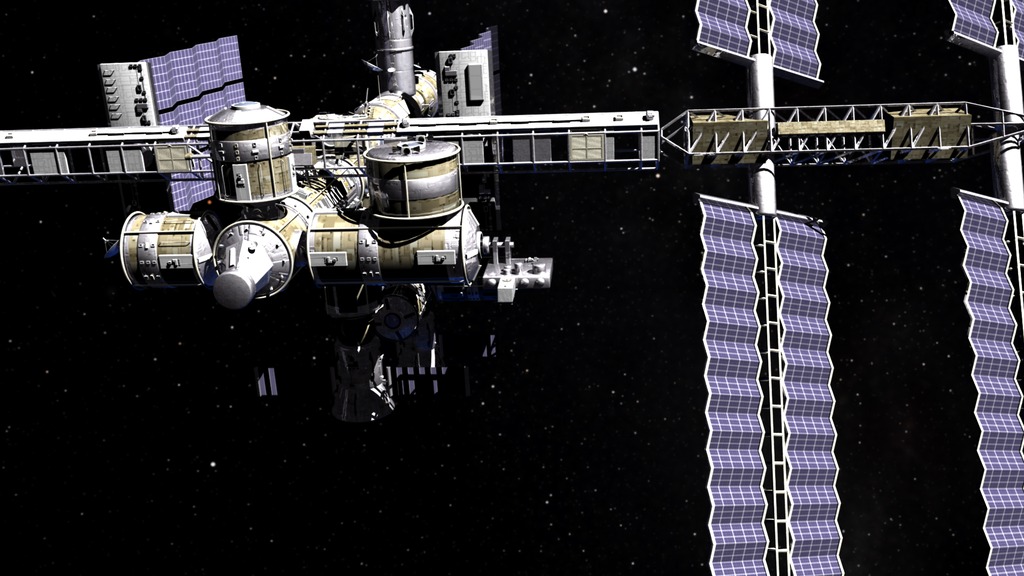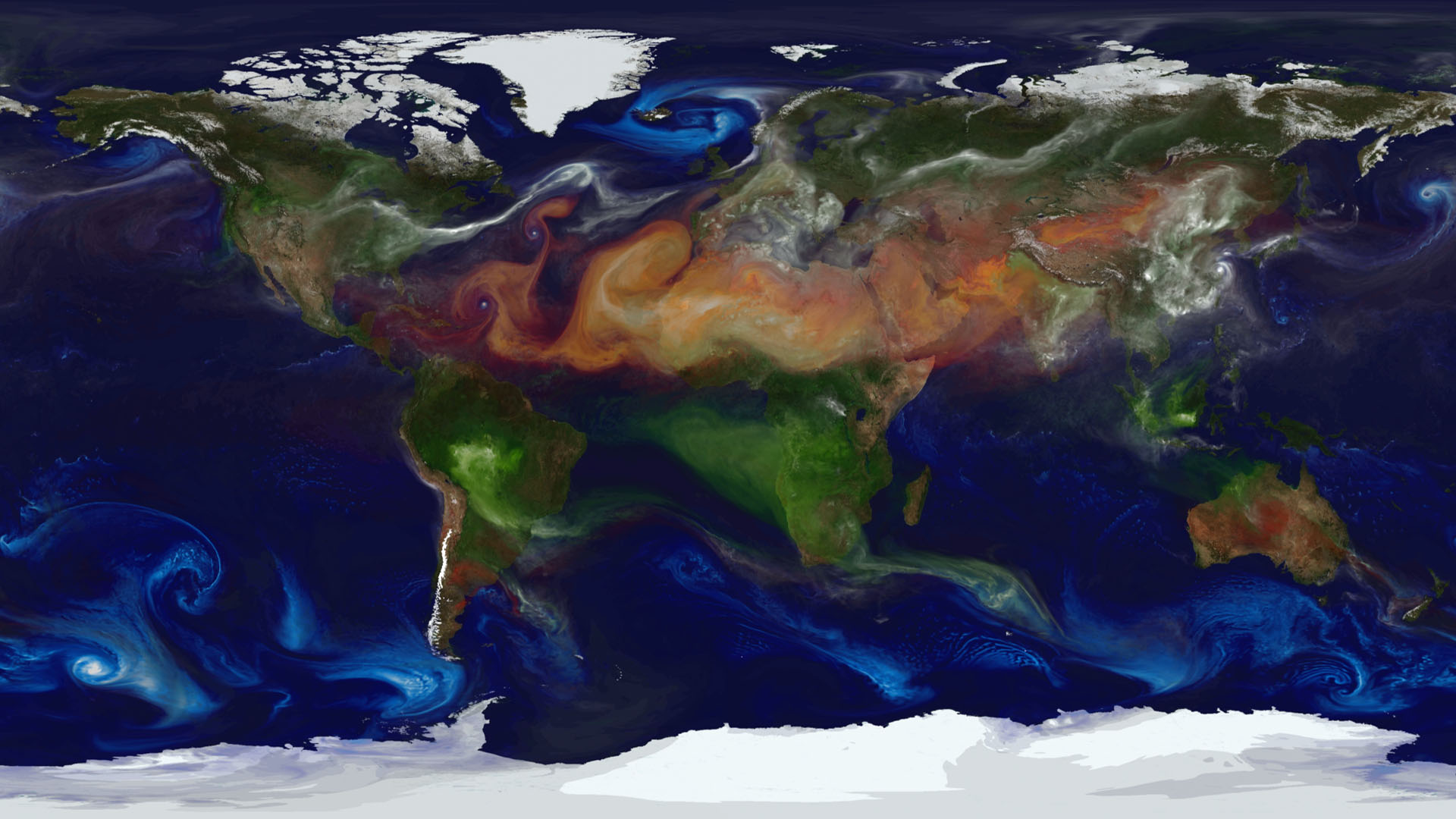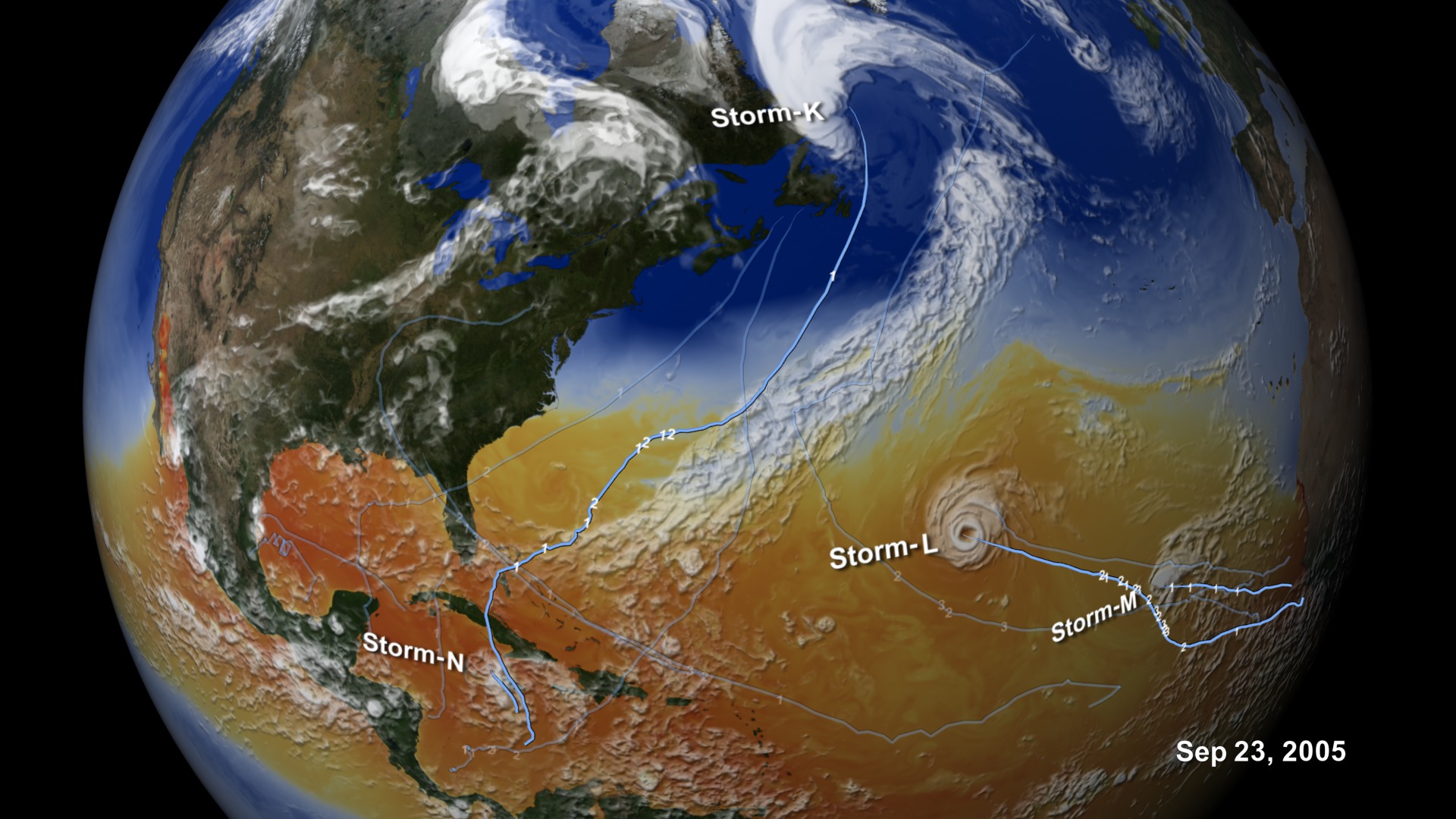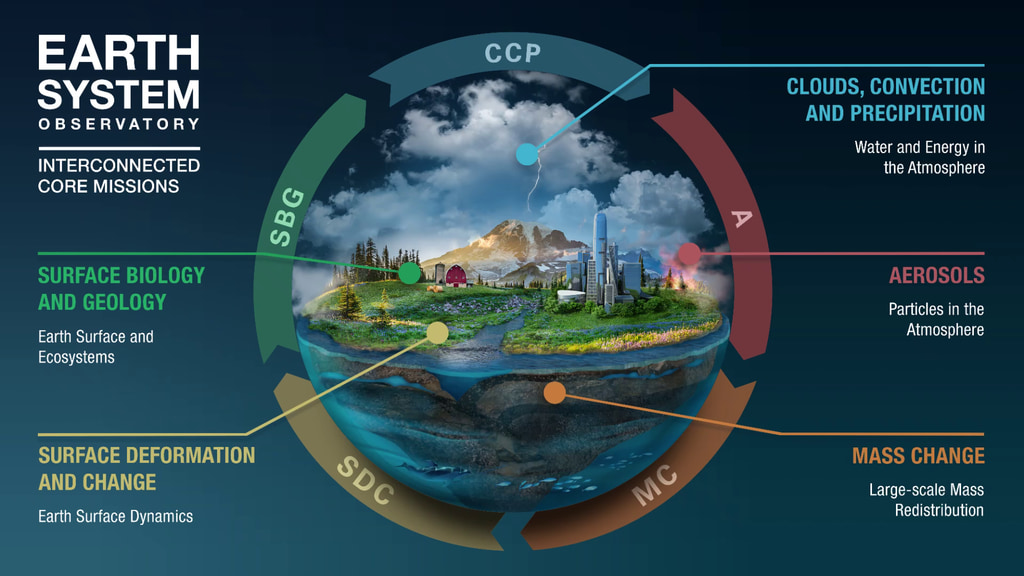A newer version of this visualization is available.
GEOS-5 Nature Run Collection
Through numerical experiments that simulate the dynamical and physical processes governing weather and climate variability of Earth's atmosphere, models create a dynamic portrait of our planet. This 10-kilometer global mesoscale simulation (Nature Run) using the NASA Goddard Earth Observing System Model (GEOS-5) explores the evolution of surface temperatures as the sun heats the Earth and fuels cloud formation in the tropics and along baroclinic zones; the presence of water vapor and precipitation within these global weather patterns; the dispersion of global aerosols from dust, biomass burning, fossil fuel emissions, and volcanoes; and the winds that transport these aerosols from the surface to upper-levels.
The full GEOS-5 simulation covered 2 years—from May 2005 to May 2007. It ran on 3,750 processors of the Discover supercomputer at the NASA Center for Climate Simulation, consuming 3 million processor hours and producing over 400 terabytes of data.
GEOS-5 development is funded by NASA's Modeling, Analysis, and Prediction Program.
Dust (red), sea salt (blue), organic/black carbon (green), and sulfates (white) displayed by their extinction aerosol optical thickness.This simulation used GEOS-5 and the Goddard Chemistry Aerosol Radiation and Transport (GOCART) Model.
This projection of the aerosols simulation onto a rotating globe tracks wildfires and human-initiated burning (red-yellow dots) as detected by NASA's MODIS instrument aboard the Terra and Aqua satellites.
A zoomed in version of aerosols and fires on a rotating globe.
Total precipitable water (white) and rainfall (colors 0-15 millimeters/hour; red=highest).
Surface winds (white 0-40 meters/second) and upper-level (250 hPa) winds (colors 0-175 meters/second; red=faster).
Surface temperature (colors 270-310 Kelvin) and outgoing longwave radiation at the top of the atmosphere (white) representative of clouds in the model.
For More Information
See the following sources:
- gmao.gsfc.nasa.gov/research/aerosol/
- gmao.gsfc.nasa.gov/research/aerosol/modeling/nr1_movie/
- gmao.gsfc.nasa.gov/systems/geos5
- gmao.gsfc.nasa.gov/systems/geos5/
- http://gmao.gsfc.nasa.gov/research/aerosol
- http://gmao.gsfc.nasa.gov/research/aerosol/modeling/nr1_movie/
- http://gmao.gsfc.nasa.gov/systems/geos5/
- http://www.nccs.nasa.gov/discover_front.html
Credits
Please give credit for this item to:
NASA/Goddard Space Flight Center
Model data processing provided by Discover supercomputer, NASA Center for Climate Simulation
-
Animator
- William Putman (NASA/GSFC)
-
Scientist
- William Putman (NASA/GSFC)
Missions
This page is related to the following missions:Series
This page can be found in the following series:Datasets used
-
GEOS-5 Cubed-Sphere (GEOS-5 Atmospheric Model on the Cubed-Sphere)
ID: 663The model is the GEOS-5 atmospheric model on the cubed-sphere, run at 14-km global resolution for 30-days. GEOS-5 is described here http://gmao.gsfc.nasa.gov/systems/geos5/ and the cubed-sphere work is described here http://sivo.gsfc.nasa.gov/cubedsphere_overview.html.
See all pages that use this dataset -
GOCART (Goddard Chemistry Aerosol and Transport (GOCART) )
ID: 712 -
[Terra and Aqua: MODIS]
ID: 775
Note: While we identify the data sets used on this page, we do not store any further details, nor the data sets themselves on our site.
Release date
This page was originally published on Thursday, March 7, 2013.
This page was last updated on Sunday, February 2, 2025 at 12:23 AM EST.
